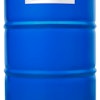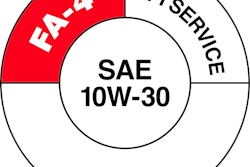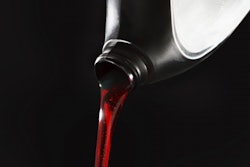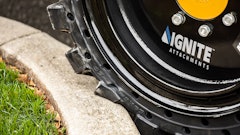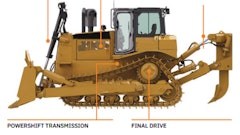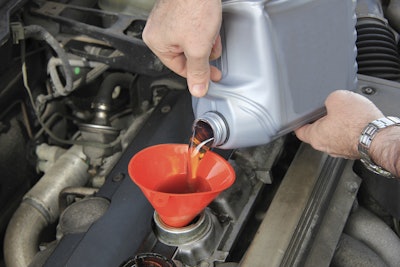
Anyone who owns a piece of equipment or truck for work should be aware of the Proposed Category 11 (PC-11) next generation of heavy-duty diesel engine oils. PC-11 has been in the works for at least four years with the new oils set to be commercially available in December 2016.
Recently, the ASTM Heavy Duty Engine Oil Classification Panel (HDEOCP) approved the PC-11 specifications with the American Petroleum Institute (API) expected to approve in the coming weeks.
What PC-11 Means for Off-highway and Construction Vehicles
So what does that mean, and how does it affect the construction industry?
Oil specifications have to be established one year prior to the oils being commercially available. The recent specification approval means the new engine oil category is keeping pace with the deadline set by engine manufacturers to have the new oils available in late 2016 for use with 2017 model year vehicles and equipment.
What comes next is the commercialization period, according to Shawn Whitacre, head of the ASTM panel and Senior Staff Engineer at Chevron. The commercialization period includes time for the oil manufacturers and their additive partners to complete product testing and begin product transitions for licensure in December 2016.
How PC-11 Oils Will Differ From Current Engine Oils
This is also the best time for consumer education. According to Whitacre, the most important thing at this point is for consumers to become educated on the changes and how those changes will affect their operations.
Contractors should use this educational period as a chance to work with their OEMs to make sure they understand and are following OEM recommendations for using these new oils. Contractors should make sure they know not only what viscosity grades are allowable for each piece of equipment but the API specs as well.
Video: Heavy Duty Engine Oil Category PC-11 Development
Two categories
Unlike new oil categories in the past, PC-11 will be split into two subcategories: API CK-4 and API FA-4.
“The split specification concept allows for this new category to be broadly applicable for use in a wide variety of heavy-duty diesel engines, regardless of whether those engines are used in on-highway trucks or in off-highway equipment,” Whitacre says.
The subcategory CK-4 builds on the previous API CJ-4 category. The CK-4 oils will offer improved oxidation stability, aeration control and resistance to viscosity loss by shear, Whitacre says.
Video: How PC-11 Oils Can Improve Fuel Economy
CK-4 oils, which will be approved for use in many of the same engines and applications that currently recommend CJ-4, will be available in the same viscosity grades consumers are using today and will also be “backwards compatible” with the CJ-4 oils.
The API FA-4 subcategory will adopt the same performance requirements as the CK-4 oils but will be at a lower viscosity level compared to today’s oils, Whitacre says. These thinner oils can offer more optimized fuel economy for newer engines designed to use lower viscosity oils.
[VIDEO] How PC-11 Affects Engine Friction and Viscosity
“Like with other low viscosity oils, we don’t expect that engine makers will allow these oils across the board,” Whitacre says. “OEMs are still working on their own engine test programs to determine what extent the new FA-4 oils can be recommended, if at all. This is something that we’ll be watching closely in the coming months, as these positions become clearer.”
The off-highway market will likely not use the FA-4 oils much. According to Whitacre, these oils are designed more for diesel pickup trucks and on-highway trucks. Contractors who do have Class 8 road trucks, medium-duty or diesel pickup trucks in their fleets may see a use for the FA-4 oils.
Effects on component life
A major priority for the PC-11 oils was they be able to stand up to elevated temperatures for longer periods of time without breaking down. New engines are placing greater demands on engine oils, and engine makers continue to push for longer oil change intervals, requiring the new oils to be more resistant to oxidation, Whitacre says.
These new oils provide consumers with the latest advancements in wear protection and viscosity control. Contractors who continue to use oils that do not meet the new engine demands and requirements may compromise the ability to achieve maximum OEM-published oil drain intervals, Whitacre adds.
While it’s not recommended contractors continue to use the older CJ-4 oils in newer engines starting with the 2017 models, using the new CK-4 oils in older engines is possible.
The CK-4 oils are backwards compatible to the previous API categories and will have no adverse effect in older equipment, Whitacre says. However, he cautions that contractors should check with their OEM recommendations for viscosity grades.
The FA-4 oils will not be as backwards compatible as the CK-4 oils. From a specification standpoint, FA-4 is not backwards compatible.
“The older category had a viscosity limit that excludes the range that the new category encompasses, so you can’t meet that new FA-4 spec and claim the older spec because the viscosity ranges are mutually exclusive,” Whitacre says.
While it appears FA-4 oils may be usable in older engines, OEMs are still figuring out to what extent the FA-4 oils can be used in older equipment.
“We expect OEMs to publish more specific guidance as to the limitations (or restrictions) associated with these lower viscosity oils in 2016, before they hit the market,” Whitacre adds.
What’s next
Whitacre says that 2016 will be a busy year for oil and additive manufacturers as the industry is entering the home stretch for PC-11. However, he says it’s important to remember that while all this work, testing and transitioning will be continuing over the next year, these oils will not be commercially available until December 2016.
It has been 10 years since the last new engine oil category was introduced. While the industry was averaging a new oil category nearly every four years prior to that, Whitacre says he expects the CK-4 and FA-4 oils will be relevant for a while with no new oil category currently on the horizon.
However, improvements in technology and continuing greenhouse gas regulations may ripple into the oils and lube market. While it’s too hard to speculate at this point, new developments in an ever changing industry may at some point trigger discussions on the next future engine oil category.
Spend the time preparing for the new oils debut in 2016. Understand what the new engine oil category means for your equipment and for your company’s oil – and maybe even equipment – buying process.


